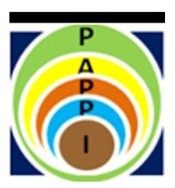Analisis Kerugian Pasca Panen melalui Commodity System Assesment Method pada Komoditas Tomat di Indonesia
Abstract
Tomat merupakan tanaman hortikultura yang banyak ditanam dan menjadi kebutuhan utama dalam setiap proses pangan, sayangnya tomat memiliki sifat perishable yaitu mudah rusak karena karakteristiknya. Hal ini menyebabkan tomat seringkali mengalami penurunan kualitas hingga susut bobot. Oleh karena itu perlu adanya identifikasi melalui penelitian ini. Penelirian ini bertujuan untuk mengetahui jumlah jalur distribusi, pelaksanaan penanganan pasca panen, dan dampak yang ditimbulkan pada komoditas tomat mulai hulu hingga hilir yang ada di Indonesia. Penelitian ini menggunakan metode Commodity System Assesment Method (CSAM) dan dilakukan pengumpulan data melalui penyebaran kuesioner, observasi, dan wawancara terhadap pelaku rantai pasok. Hasil penelitian yang diperoleh menunjukkan terdapat 4 saluran distribusi untuk komoditas tomat di Indonesia yaitu jalur 1 (melalui petani, pengecer, hingga ke konsumen), jalur 2 (melalui petani, pedagang, pasar tradisional, hingga ke konsumen), jalur 3 (melalui petani, pengepul, pengecer/supermarket, hingga ke konsumen), dan jalur 4 (melalui petani, pengepul, pedagang, pengecer, hingga ke konsumen). Hasil identifikasi dampak penanganan pasca panen terhadap kehilangan susut bobot pada komoditas tomat di Indonesia menunjukkan hasil pada tingkat petani sebesar 5.06% (tidak signfiikan), pengepul 10.18% (signifikan), pengecer 10% (signifikan), pedagang 4.71% (tidak signifikan), dan supermarket sebesar 3% (tidak signifikan). Perlu adanya perbaikan dalam siklus rantai pasok tomat yang ada di Indonesia dari sisi fasilitas, kelembagaan, hingga lingkungan supaya dapat tercipta rantai pasok komoditas tomat yang berkelanjutan.
References
Boiteau, J. M., & Pingali, P. (2022). Food loss of perishable produce from farm to retail: Evidence from tomato supply chains in South India. American Journal of Clinical Nutrition, 115(6), 1535–1548. https://doi.org/10.1093/ajcn/nqac039
Castro, T. A., Leite, B. S., Assunção, L. S., de Jesus Freitas, T., Colauto, N. B., Linde, G. A., Otero, D. M., Machado, B. A. S., & Ferreira Ribeiro, C. D. (2021). Red tomato products as an alternative to reduce synthetic dyes in the food industry: A review. Molecules, 26(23), 1–24. https://doi.org/10.3390/molecules26237125
Chaboud, G., & Moustier, P. (2021). The role of diverse distribution channels in reducing food loss and waste: The case of the Cali tomato supply chain in Colombia. Food Policy, 98(March), 101881. https://doi.org/10.1016/j.foodpol.2020.101881
Choi, H. G., & Park, K. S. (2023). Ripening Process of Tomato Fruits Postharvest: Impact of Environmental Conditions on Quality and Chlorophyll a Fluorescence Characteristics. Horticulturae, 9(7). https://doi.org/10.3390/horticulturae9070812
Dobrin, A., Nedeluș, A., Bujor, O., Moț, A., Zugravu, M., & Bădulescu, L. (2019). Nutritional Quality Parameters of The Fresh Red Tomato Varieties Cultivated in Organic System. Scientific Papers. Series B, Horticulture., LXIII(1), 439–443.
Fagundes, C., Moraes, K., Pérez-Gago, M. B., Palou, L., Maraschin, M., & Monteiro, A. R. (2015). Effect of active modified atmosphere and cold storage on the postharvest quality of cherry tomatoes. Postharvest Biology and Technology, 109, 73–81. https://doi.org/10.1016/j.postharvbio.2015.05.017
Gebregziabher, A. A., Supriyadi, S., Indarti, S., & Setyowati, L. (2021). Texture Profile and Pectinase Activity in Tomato Fruit (Solanum Lycopersicum, Servo F1) at Different Maturity Stages and Storage Temperatures. Planta Tropika: Jurnal Agrosains, 9(1), 20–34. https://doi.org/10.18196/pt.v9i1.9139
Kementerian Pertanian. (2023). Statistik Pertanian 2023. In Kementerian Pertanian.
LaGra, J. (1990). A Commodity System Assessment Methodology for Problem and Project Identification. 10.
Mulyani, S., Admadi, B., & Suyasa, I. G. N. A. (2017). The Commodity Application System Assessment Method (CSAM) on Post harvest Handling of Citrus Keprok (Citrus reticulate) from the Dis. Agroindustrial Journal, 2(1), 51. https://doi.org/10.22146/aij.v2i1.24995
Osei-Kwarteng, M., Gweyi-Onyango, J. P., & Mahunu, G. K. (2017). Commodity Systems Assessment Methodology of Postharvest Losses in Vegetable Amaranths: The Case of Tamale, Ghana. International Journal of Agronomy, 2017. https://doi.org/10.1155/2017/1747869
Roy, P., Nei, D., Okadome, H., Nakamura, N., Orikasa, T., & Shiina, T. (2008). Life cycle inventory analysis of fresh tomato distribution systems in Japan considering the quality aspect. Journal of Food Engineering, 86(2), 225–233. https://doi.org/10.1016/j.jfoodeng.2007.09.033
Sun, S., Wang, X., Xu, J., Fu, H., & Sun, Z. (2021). Study of tomato growth weight-distribution model based on real-time plant weight in a solar greenhouse. Journal of Taibah University for Science, 15(1), 1027–1037. https://doi.org/10.1080/16583655.2021.2014690
Suwarjana, P. E., Triani, I. G. . L., & Admadi, B. (2015). Aplikasi Commodity System Assessment Method (CSAM) dalam Distribusi Sawi Pakcoy (Brassica rapa L) dari Petani di Kecamatan Baturiti ke Pengecer. Jurnal Rekayasa Dan Manajemen Agroindustri, 3(4), 140–148.
Zhang, Z., Bian, B., & Jiang, Y. (2020). A joint decision-making approach for tomato picking and distribution considering postharvest maturity. Agronomy, 10(9). https://doi.org/10.3390/agronomy10091330














